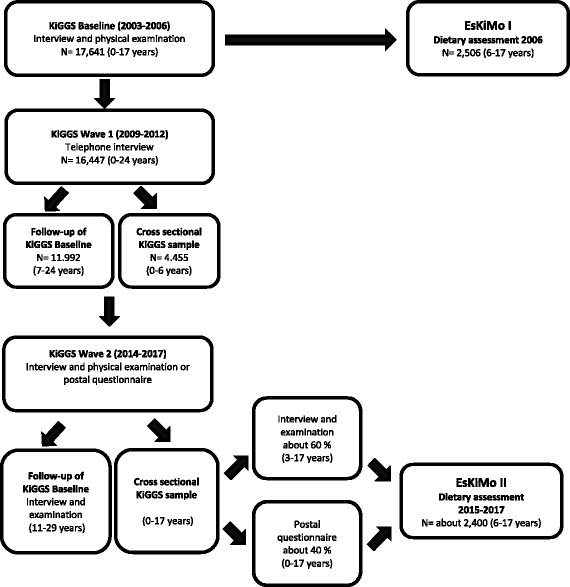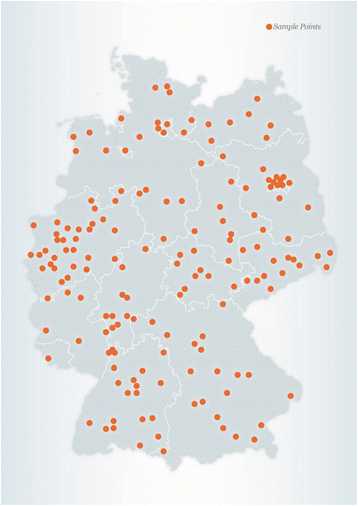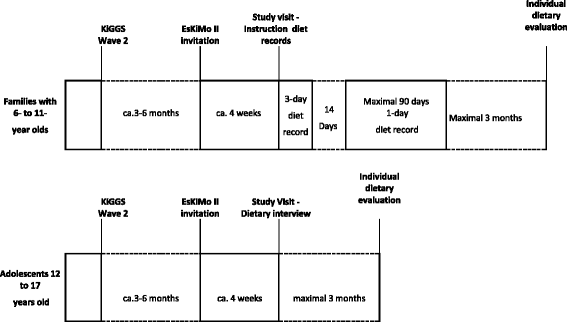Comprehensive assessment of food and nutrient intake of children and adolescents in Germany: EsKiMo II - the eating study as a KiGGS module
- PMID: 32153853
- PMCID: PMC7050737
- DOI: 10.1186/s40795-017-0196-5
Comprehensive assessment of food and nutrient intake of children and adolescents in Germany: EsKiMo II - the eating study as a KiGGS module
Abstract
Background: As part of the second wave of the German Health Interview and Examination Survey for Children and Adolescents (KiGGS Wave 2), food and nutrient intake of children and adolescents aged 6-17 years living in Germany is assessed in EsKiMo II - the Eating Study as a KiGGS Module.
Methods: EsKiMo II is a cross-sectional study, conducted from June 2015 until September 2017. The study population comprises 6 to 17-year-old study participants from the cross-sectional sample of KiGGS Wave 2 in 167 KiGGS sample points, which are revisited by trained nutritionists. Dietary intake is assessed by weighted food records during three consecutive days plus one randomly selected day within the following 3 months for children aged 6-11 years. Dietary intake for adolescents aged 12-17 years is assessed by computer-assisted dietary history interviews, reflecting the past four weeks, using the software DISHES. Further information, for example, about specific diets and dietary supplement intake, is reported during a standardised computer assisted interview for all participants. Food items are coded by the German Food Code and Nutrient Database (BLS 3.02).
Discussion: EsKiMo II provides actual data on the dietary behaviour of children and adolescents living in Germany and their determinants. Results of EsKiMo II will be relevant for decision-making, measures, and evaluations within nutrition, consumer and health policy.
Keywords: Children and adolescents; Dietary behavior; EsKiMo; Food and nutrient intake; Germany; Nutrition.
© The Author(s). 2017.
Conflict of interest statement
Competing interestsThe authors declare that they have no competing interests.
Figures
References
-
- Frewer L, Scholderer J, Lambert N. Consumer acceptance of functional foods: issues for the future. Br Food J. 2003;105:714–731. doi: 10.1108/00070700310506263. - DOI
-
- BH RM, Grünewald-Funk D, Heseker H, Kroke A, Leschik-Bonnet E, Oberritter H, Strohm D, Watzl B for the German Nutrition Society (DGE) Vegan diet. Position of the German nutrition society (DGE) Ernahrungs Umschau. 2016;63(05):M262.
LinkOut - more resources
Full Text Sources
Research Materials
Miscellaneous



